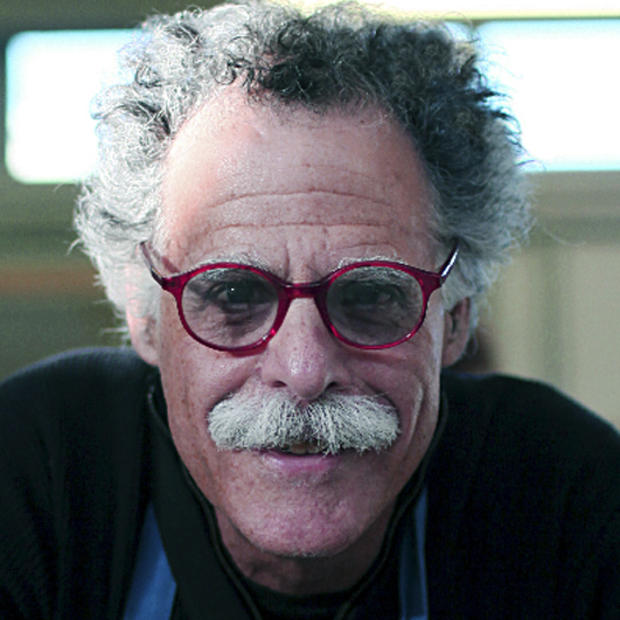Thomas Pynchon’s new novel “Bleeding Edge,” set in New York City between the 2000 tech crash and 9/11, gives us a rich surface of language, many glimpses of depth and understanding and questions much worth asking. Seattle has a bit part as a Purgatory for geeks, a placeless reality — neither Silicon Valley nor Silicon Alley — commanded by evil emperor Bill Gates.
Pynchon knows Seattle first hand from his time as a technical writer for Boeing. Writing for Boeing about its developing missile systems provided important groundwork for his masterpiece “Gravity’s Rainbow.” As Pynchon knows, and much of Seattle has forgotten, it was Boeing that brought computing power and the defense industry to Seattle. The Department of Defense, Boeing’s longstanding partner, is also where the Internet was developed. The Internet is both foreground and background in “Bleeding Edge.” As both historian and philosopher of history, Pynchon reminds us that the origins of the Internet are not to be discounted.
“Bleeding Edge” is a compelling, at times laugh out loud, serious and paranoid book about the Internet and the space/non-space it fills in our lives. Non-Internet reality, ‘meatspace’ in the novel, is New York, and Pynchon has lovingly sketched the city’s geography and architecture and daily life — sounds and soundtracks, subways and taxis, restaurants, dives, takeout, the "newspaper of record," delivery boys and trucks — its actuality a reflection of intermixed present and past. New York becomes a place that can be felt and completely, or maybe incompletely, lived in. The experience of living there, the author argues, affects all the cultural artifacts that the city produces, including the Internet itself.
Pynchon's Internet, preceded by the flows and structures of global capitalism — all but hidden by the chatter of popular culture skittering nervously across the surface — is anonymous, endless and often lonely. It fosters paranoia, a long-standing preoccupation of Pynchon's. Filled with detritus, yet surprisingly devoid of layers, the Internet creates place as we in the physical world understand it. Toward the end of the novel, after 9/11, Pynchon conjures an Internet of ghosts; a space of forgotten webpages where avatars can freely roam.
It takes a bit of reading to become accustomed to Pynchon’s language. His many characters speak in a nervous, wisecracking, run-on style of jive, taglines, riffs and one-liners. The plot (never ever the point for Pynchon) is really the plotting, the layering and intersection of meaning, a gradual awareness of the rhythm, ebb and flow of a foreign language.
“It’s really just another maze, only invisible,” writes Pynchon in “Bleeding Edge”, describing a web-based security program called DeepArcher. “You’re dowsing for transparent links, each measuring one pixel by one, each link vanishing and relocating as soon as it’s clicked on … an invisible self-recoding pathway, no chance of retracing it”
The act of measuring, of plotting a place with no known coordinates is classic Pynchon. Perhaps plot in Pynchon is in fact mapmaking. The author devoted a whole novel to the tale of pioneering surveyors Charles Mason and Jeremiah Dixon, they of Mason-Dixon line fame.
As the book wanders in and out of place nd non-place, Pynchon never loses track of the essential fact that global capitalism has not made all the world the same. It is worthy of consideration then to think through how Pynchon might characterize Boeing’s recent attempt to untether from place; the outsourcing of the 787, and the effort to get Seattle machinists to accept a significant downgrade in pay in exchange for the contract to build the 777X.
Taken at face value, Boeing seems to believe that place does not matter, or no longer matters; that anything can happen anywhere. Generations of airplanes have been built in Seattle by generations of machinists. Executives at Boeing propose that the future ability of machinists to build airplanes has no relation to what was built before in Seattle. They propose that an airplane culture can emerge rapidly and anywhere. The fact that the strategy has so far failed spectacularly appears not to color their decision in the least.
Boeing of course had a great deal to do with the development of Seattle’s meatspace. The geography of Seattle had a great deal to do with William Boeing’s decision to build airplanes. Initially, he came to Seattle directly from Yale to buy timber, and began working with highly skilled Scandinavian wooden boat builders, whom he hired to build wooden planes. Having made globetrotting easy, Boeing certainly helped shape our sense that the world is interconnected. But the company has mixed up what “Bleeding Edge” makes so clear: Place matters. Place develops out of people and the culture they create. Places are not interchangeable, nor are those who live and work in them.
The Internet appears frictionless, presenting a model of the world that allows people to click in and out of time and space. Boeing has fallen for the fiction of a world that is as frictionless as the Internet.
In the end, Pynchon’s Internet becomes a place of ghosts. It is his way of saying that the space of the web isn’t smooth, but rather bent by the very history of the medium.
As it bends, the Internet becomes less a space of transition and transaction and more a place where people live. Now old enough to have a past, the Internet has been warped by its own history. That warp is what Pynchon so emphatically embraces in “Bleeding Edge.”



